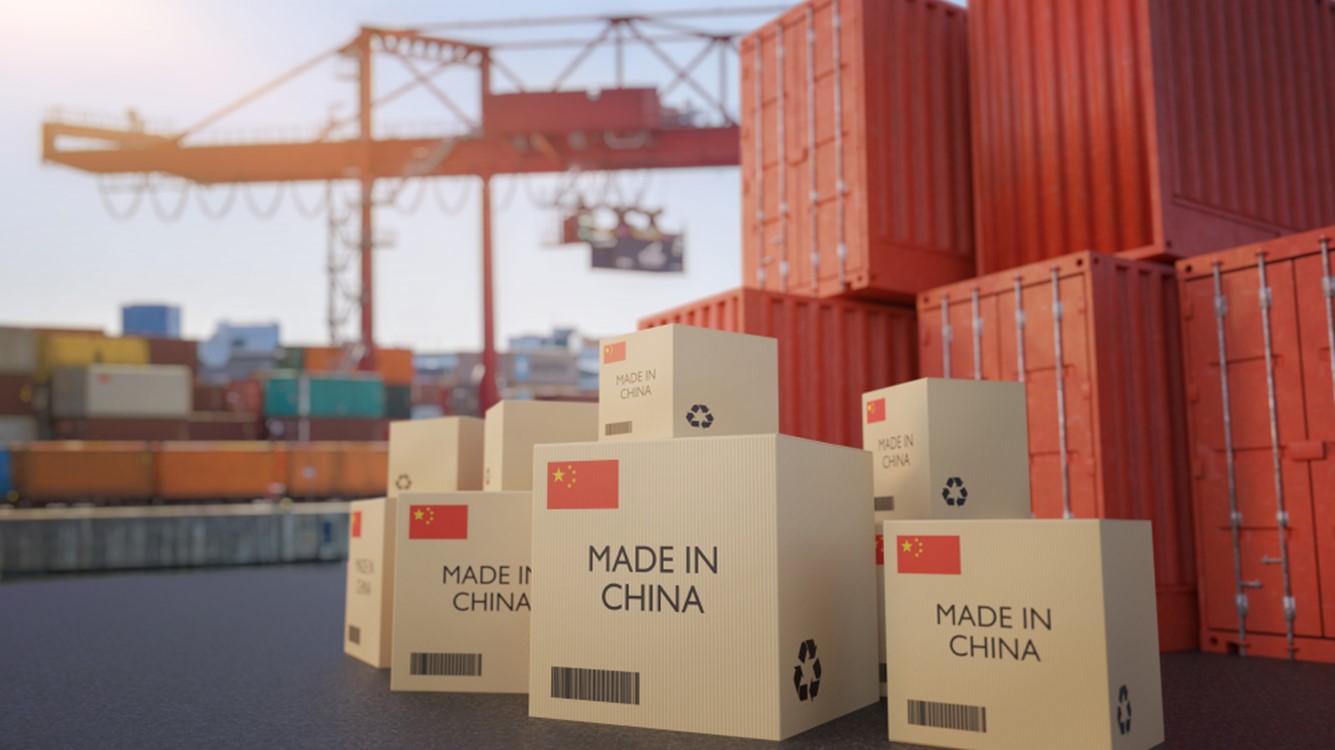
Global Navigator from KPMG Economics
December 12, 2024
In a 1965 presidential address, Charles de Gaulle of France criticized the unique advantages that the US enjoys due to the special status of the US dollar. He was talking about what would become known as “exorbitant privilege.” That refers to the benefits that the United States economy reaps from the US dollar’s status as the international reserve currency. It allows the US to avoid the jump in interest rates typically linked to growing government deficits. That status extends to the Federal Reserve and means its decisions have spillover effects the world over.
On a recent trip to Asia, KPMG Senior Economist Ben Shoesmith sat down with executives from multinational firms. This edition of Global Navigator highlights what was heard on the ground: Concern about the US dollar’s “exorbitant privilege” and spillover effects of US monetary policy featured heavily in those conversations. Companies in Asia are seeking shelter from the potential spillover effects of the Fed’s monetary policy actions, including currency fluctuations. The latter is crucial as it could represent a warning shot over the bow for broader financial market stability. Currency swings are occurring, despite the otherwise welcome news regarding rate cuts by the Fed.
Three big trends:
- The Fed still dominates. Firms in Asia are concerned with uncertainties surrounding monetary policy in the US and what they could mean for their domestic currencies. Questions about the outlook for the Fed took top billing over the outlook for US growth and shifts in trade policies.
- Post-election markets portend more volatility. Recent large currency swings following the US election illustrate the potential risks that more chaotic currency markets could sow. The dollar has appreciated in spite of a falling fed funds rate.
- Loss of dollar dominance could unleash currency chaos. Efforts during the recent BRICS annual meeting to forge alternative payment systems and currencies underlined efforts to avoid sanctions by dethroning the dollar. Those efforts are unlikely to undermine the dollar’s “exorbitant privilege.”
The Federal Reserve still dominates
The Fed’s decisions, its impact on currencies and the actions of other central banks topped the discussions with Asian executives. There was some talk that countries most vulnerable to protectionist policies and sanctions could move away from using the dollar. Recent shifts in the geopolitical landscape since then, including a setback for Iran, could undermine efforts to move away from the dollar.
The reserve currency status of the dollar shelters the US from some of the worst repercussions of widening federal deficits by allowing for lower borrowing costs; investors flock to the US Treasury bond market in times of uncertainty. Over half of foreign transactions are denominated in dollars, which amplifies the role the Fed plays in the global economy. Movements in US bonds spur currency fluctuations.
Sharp currency depreciations lead to inflation, higher borrowing costs and capital flight; historically, they have triggered full-blown financial crises in emerging markets. That has prompted many central banks to move when the Fed does to minimize spillover, even at the expense of growth.
The Fed has already signaled it intends to slow the pace of rate cuts in 2025. Our forecast is now for three cuts by year-end 2025, one-half percent less than a month ago, and a full percent lower than we expected when the Fed started its rate-cutting cycle in September.
Executives were eager for additional rate cuts, as they would decrease the cost of borrowing in dollar-denominated debt. Hope was high that Fed rate cuts would open the door to the same action by their own central banks.
Rising US bond yields have strengthened the US dollar against major currencies since the election, posing challenges for our trading partners' stimulation efforts. The currencies of Mexico and Canada, our closest trading partners, have been hit particularly hard. That raises import costs and puts a floor under inflation, making it harder for their central banks to cut rates.
The same is true of the euro, as much of the eurozone remains extremely weak. The yen has depreciated but is still in a better position than it was earlier in the year when the Bank of Japan (BOJ) began rate hikes. The Chinese renminbi has depreciated by nearly 15% in the last few years. Further depreciation would make goods more expensive, possibly counteracting what looks like borderline deflation in China. The problem is how those shifts would be interpreted by trading partners; they could inflame trade tensions and trigger more protectionist policies.
The Fed’s upcoming framework review in 2025 came as a surprise to executives in Asia. The review could change how the Federal Open Market Committee (FOMC), the policy decision-making arm of the Fed, interprets its dual mandate of maximum employment and price stability. That could have implications for the Fed’s responsiveness to different shocks and could change the terminal rate. The longer-run fed funds rate has already drifted up in the Fed’s own forecasts.
Loss of dollar dominance could unleash currency chaos
BRICS (Brazil, Russia, India, China and South Africa) recently held their first annual summit since the entry of Egypt, Ethiopia, Iran, Saudi Arabia and the United Arab Emirates. The organization’s countries comprise more than a third of global GDP in purchasing power parity terms, and nearly half of the world’s population.
Sanctions evasion is a key area of interest for the organization following the onset of the Russia-Ukraine war. Major Russian banks were banned from utilizing SWIFT, the main network on which international payments are facilitated. A ban from SWIFT makes it difficult to conduct international bank transactions, trade goods in non-domestic currencies and exchange currencies.
The SWIFT ban along with other sanctions on members of the organization has boosted the push to pay for more trade in local currencies, rather than the dollar. The prospects for that happening, known as “de-dollarization,” were discussed at nearly every stop.
It is highly unlikely that a de-dollarization driven by external factors is imminent. Focus at the BRICS meeting shifted from a shared currency to cross-border payment systems and increased gold holdings.
The dollar still supports the plumbing that underpins the global financial trading system; it is used to price commodities. The US dollar makes up 58% of foreign exchange reserves and a massive 88% of foreign exchange transactions in 2022. The Bank for International Settlements estimates the renminbi has made some gains mainly at the expense of the euro; it was used in 7% of over-the-counter foreign exchange trades in 2022.
A common misconception of the discussion surrounding de-dollarization is that another currency would assume the US dollar’s exorbitant privilege. That is not necessarily the case; there is no obvious successor to the dollar. The more likely scenario is that there would be more chaotic foreign exchange markets. Recent shifts in the Middle East, notably in terms of Iran’s diminishing leverage in the region, have raised more questions about the ability to move away from the dollar.
Post-election markets portend more volatility
What is perhaps more important than de-dollarization is the chaos that could ensue in currency markets should the dollar destabilize. Treasury bond yields have moved higher in response to fears of higher inflation and ballooning government deficits. That has triggered spillover effects, including a stronger US dollar and destabilizing currency depreciations abroad.
The largest risk to dollar stability today would be a catastrophic internal US policy mistake (or several at once) that sinks confidence. Risks include erosion of the Fed’s independence, a full-scale trade war, growing deficits and uncertainty surrounding government shutdowns and debt ceiling negotiations. Most of the downgrades to the debt ratings since the 2011 debt ceiling crisis were due to an “erosion of governance” or political brinkmanship instead of the surge in debt loads.
The president-elect has said the Fed should consider input from him when making decisions on interest rates. Historically, political interference in central banking has resulted in stagflation similar to what the US experienced in the 1970s.
The prospective members of the president-elect’s cabinet have said that they would like to pursue dollar depreciation to combat the trade deficit, akin to the Plaza Accord of 1985. That could contribute to financial instability which would erode dollar dominance. We assume an intentional depreciation of the dollar would not be successful given the level of coordination required with other central banks. If faced with tariffs from the US, other countries may want to keep their currencies weaker to offset the costs for their buyers. Depreciation, whether organic or via currency intervention, makes exports cheaper. That could blunt the blow of tariffs in a full-scale trade war scenario.
The reserve currency status of the dollar is the source of the “exorbitant privilege” of the US economy…sheltering it from some of the worst repercussions of widening federal deficits…investors flock to the US Treasury market in times of uncertainty.
Bottom Line:

The “exorbitant privilege” of the US dollar remains front and center in the minds of central bankers and executives around the world. Absent a policy misstep, the US dollar is likely to retain its global dominance. However, that does not preclude major currency market volatility and chaotic market movements.
Forecast sidebar: Headwinds from trade are mounting
The global economy is estimated to expand by 3.1% in 2024, slightly lower than the 3.2% pace of 2023. Global growth is forecast to further slow to 3.0% in 2025 and 2.9% in 2026. Despite much of the developed world cutting interest rates, cooler growth in the US will likely drive the slowdown. Future risks from 2026 onward include growing protectionism and potential trade wars. Our baseline forecast now includes modest tariffs, including some affecting key trading partners in Asia, slower immigration in the US and only three more interest rate cuts from the Federal Reserve.
In Asia, China is stimulating its domestic economy to offset the drag associated with the real estate sector and an aging population; but there are green shoots in consumer spending. India is picking up some of the slack. and attracting foreign investment due to its large labor force and improving infrastructure and regulatory environment. Indonesia, the Philippines and Malaysia have also benefitted from an influx of foreign investment due to the shifting geopolitical landscape. Japan is gaining ground from a pickup in wage growth; inflation remains a hurdle along with more restrictive monetary policy.
Europe faces an uphill battle as its historical growth engine, Germany, continues to underperform amid political turmoil and strict fiscal rules that limit stimulus. Growth in the United Kingdom remains sluggish in part due to increased household savings at the expense of consumption. Southern European countries have benefitted from an influx of tourists, which has propped up services inflation.
Latin American growth is expected to exceed pre-pandemic growth rates. Sticky services inflation has prompted central banks to take a hawkish tone and likely slow monetary easing. Brazil has been an outlier; the Central Bank of Brazil is taming resurgent inflation through additional rate hikes.
The Middle East and Africa are forecast to strengthen through 2026. The broader region is aiming to diversify away from oil to more sustainable growth. Some countries in the region are looking at what it terms the three “T’s” of its strategy to grow: trade, tourism and transportation.
In North America, the US carries the bulk of the regional economy. The US economy is expected to slow through 2025 and 2026 as the influence of tariffs and curbs to immigration hamper growth. The effects compound beyond 2026.
Global Outlook Forecast - December 2024
Subscribe to insights from KPMG Economics
KPMG Economics distributes a wide selection of insight and analysis to help businesses make informed decisions.
Explore more

Global Navigator from KPMG Economics
Lights, camera, cut…interest rates

KPMG Economics
A source for unbiased economic intelligence to help improve strategic decision-making.

Trade deficit narrows after pre-tariff surge in imports
The economy looks like it expanded at a 3.0% pace in Q3.
Meet our team

